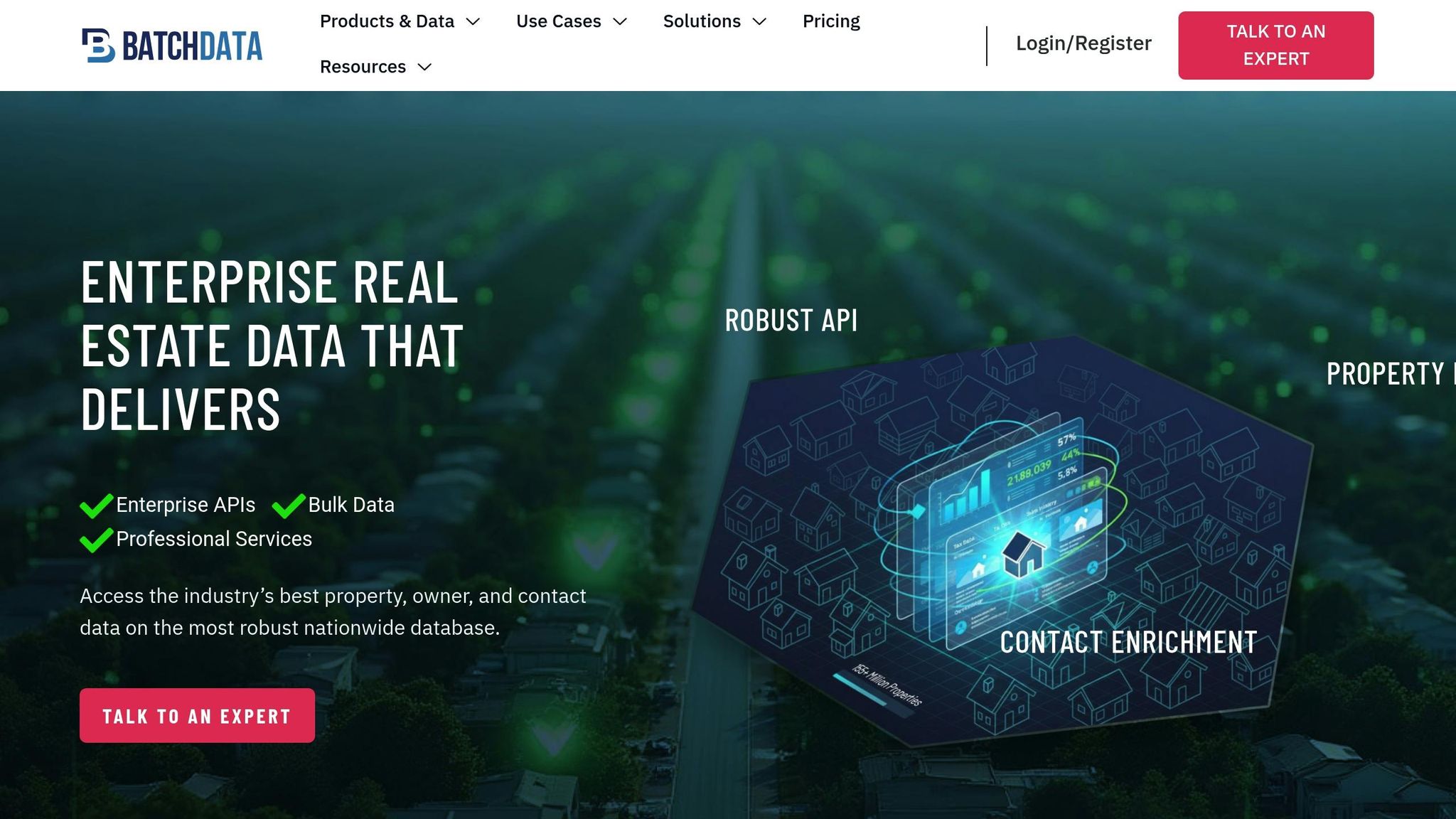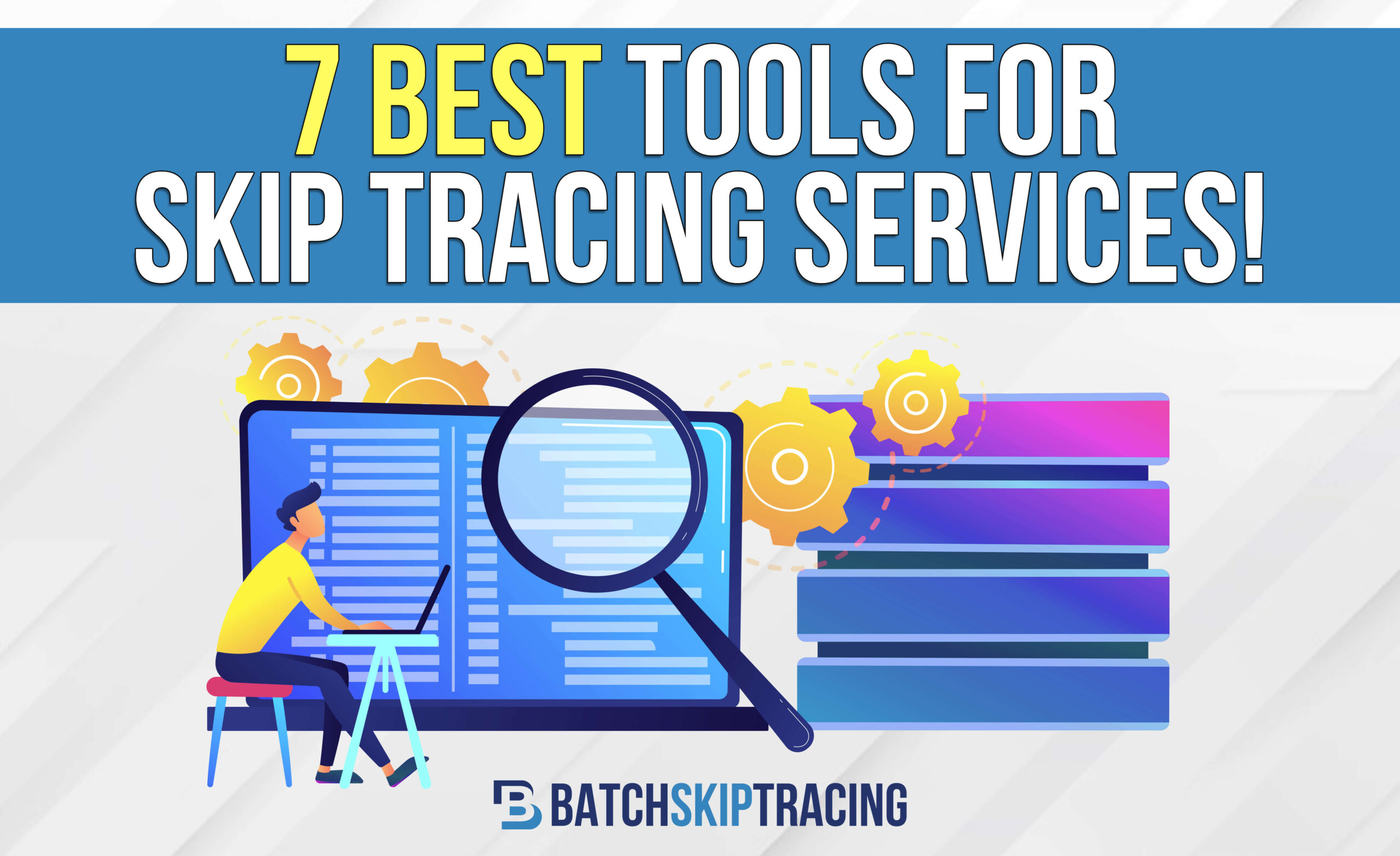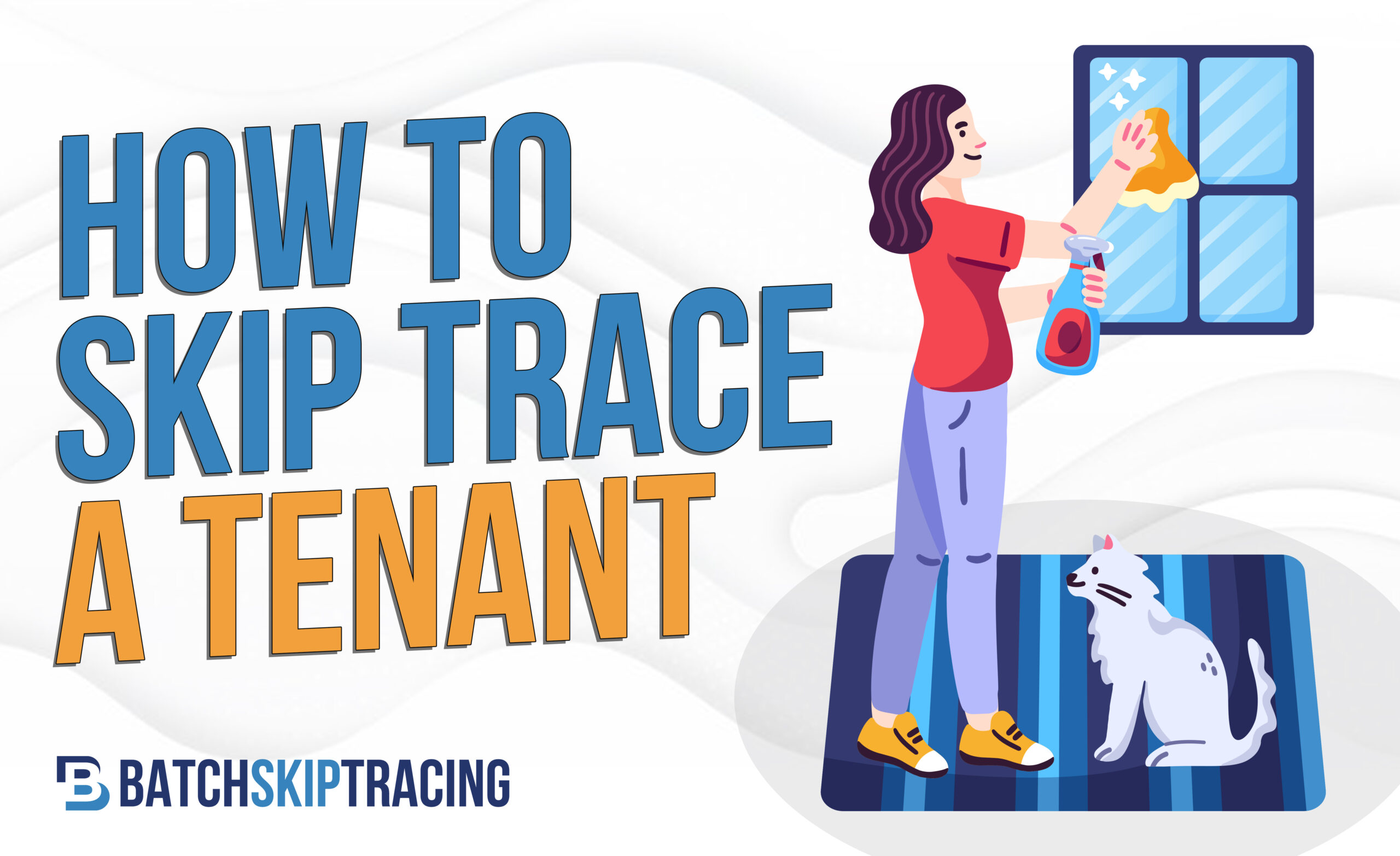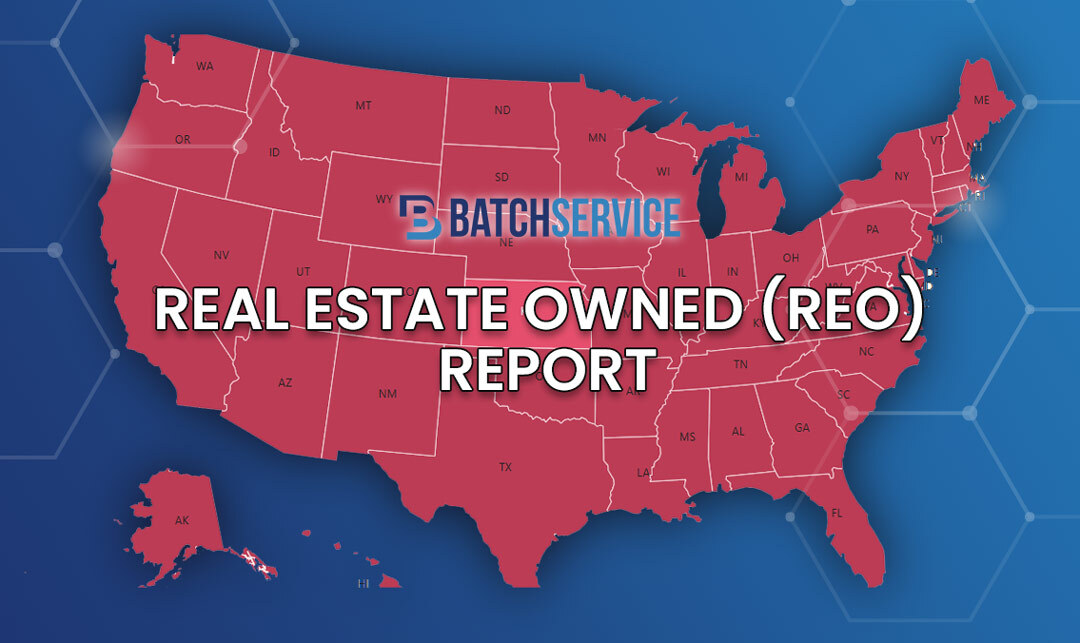Skip tracing helps real estate professionals find property owners who are hard to reach, uncovering off-market opportunities for better deals. By focusing on motivated sellers like absentee owners, inherited property holders, or those in pre-foreclosure, this method targets leads that traditional approaches miss.
To maximize return on investment (ROI) from skip tracing, track key metrics such as cost per lead, match rates, and conversion rates. Tools like BatchData streamline this process by delivering accurate data quickly, helping you save time and focus on high-potential leads.
Here’s what you’ll learn:
- What skip tracing is and why it works for real estate
- How to measure ROI using metrics like lead conversion and outreach costs
- Strategies for improving ROI, including automation and data analysis
- Tools and tips for scaling campaigns while staying compliant
Skip tracing isn’t just about finding leads – it’s about finding the right leads efficiently and turning them into profitable deals. Let’s break it down.
What are the TOP Skip Tracing Companies That Can Give You HIGH QUALITY Data?
Key Metrics for Measuring Skip Tracing ROI
Keeping an eye on the right metrics is essential for making skip tracing a profitable part of your strategy. By focusing on these key indicators, you can ensure every dollar spent delivers results that contribute to your bottom line.
Core Metrics for ROI Analysis
Cost per skip trace is the starting point for evaluating your return on investment. This metric tells you how much you’re spending on average to gather contact details for each property owner. Fees typically range from $0.10 to $1.00 per record, depending on the quality of the data and the volume you’re working with. Most services only charge for successful matches, helping you better predict costs.
Match rate measures the percentage of records where valid contact information is found. High-quality skip tracing services usually achieve match rates between 65-85%. If your match rate starts to dip, it might be a sign that your data sources need attention.
Lead conversion rate tracks how many of your skip-traced contacts eventually turn into closed deals. This rate varies depending on the quality of your list and how effective your outreach is. For example, lists targeting motivated sellers – like pre-foreclosure or tax-delinquent properties – tend to convert better than general absentee owner lists.
Time to contact and close zeroes in on two key timeframes: how quickly you reach property owners after obtaining their information and how long it takes to finalize a deal. Skip tracing often leads to deals closing within 30–90 days, which is faster than traditional MLS transactions. Shorter timelines usually indicate more motivated sellers and better returns.
Response rates by channel help you figure out which outreach methods work best. For example, direct mail often sees 1-3% response rates, while targeted phone calls to verified skip-traced numbers can achieve 10-20% contact rates. By tracking these rates, you can allocate your outreach budget where it will have the most impact.
By monitoring these metrics, you can make informed adjustments to maximize your skip tracing ROI.
How to Calculate ROI for Skip Tracing
Once you’ve defined your metrics, calculating ROI becomes straightforward. The formula is simple: ROI = ((Revenue from closed deals – Skip tracing costs) / Skip tracing costs) x 100. But don’t stop at just the service fees – include all related expenses for a complete picture.
Your total skip tracing costs should factor in:
- Per-record fees for successful matches
- Marketing and outreach costs (e.g., direct mail and phone calls)
- Labor costs for team members handling outreach and follow-ups
- Technology expenses like CRM systems or other lead management tools
For example, let’s say you spend $500 on skip tracing, $1,000 on direct mail, and $500 on labor, for a total of $2,000. If you close a deal with a $15,000 profit, your ROI would be ((15,000 – 2,000) / 2,000) x 100 = 650%.
To get a realistic ROI, don’t forget hidden costs like data cleaning, multiple outreach attempts, compliance expenses, and even opportunity costs. Overlooking these can make campaigns seem more profitable than they really are.
Tools for Tracking and Monitoring ROI
Accurate ROI tracking starts with the right tools. Here are a few options to consider:
- CRM systems with skip tracing integrations make it easier to manage leads and track performance. Look for features like lead source attribution, activity tracking, pipeline management, and automated follow-ups.
- Analytics dashboards allow you to monitor key metrics like cost per lead, conversion rates, revenue by campaign, and overall ROI in real time. Platforms like BatchData offer analytics tools tailored for real estate professionals to help fine-tune campaign strategies.
- API integration automates data flow between your skip tracing service and other tools. For instance, BatchData’s API can connect with your CRM and marketing software, reducing manual data entry errors and improving workflow efficiency.
How often should you analyze your ROI? That depends on your campaign activity. Weekly reviews are ideal for high-volume campaigns, as they help you quickly spot underperforming strategies. For a broader view, monthly analyses provide enough data to identify trends without overreacting to short-term changes.
Certain events might call for immediate action, though – like a sudden drop in match rates, declining conversion rates, unexpected cost spikes, or shifts in time-to-close metrics. These red flags often signal market changes or issues within your campaign that need prompt attention.
Modern skip tracing tools, like BatchData, have made significant strides in efficiency. They’ve cut contact enrichment times from 30 minutes to just 30 seconds while maintaining 76% accuracy in reaching property owners. This speed and precision can directly boost your ROI by lowering labor costs and increasing successful contact rates.
Factors That Impact Skip Tracing ROI
When it comes to skip tracing, several elements can determine whether your campaign succeeds or falls short. By understanding these factors, you can fine-tune your strategy and get the most out of your investment.
Data Quality and Accuracy
The foundation of a successful skip tracing campaign lies in the quality of your data. Having accurate and up-to-date information significantly boosts your chances of connecting with the right property owners on the first attempt. Inaccurate or outdated data, on the other hand, leads to wasted outreach efforts and unnecessary expenses.
Think about the contrast between relying on outdated public records versus using enriched, verified data. For instance, one investor who utilized high-quality, validated data reported reaching 80% of absentee owners, which ultimately increased their closed deals by 25%.
The most important data for skip tracing includes:
- Contact information for property owners (phone numbers, emails, mailing addresses)
- Property details (ownership status, vacancy, distress indicators)
- Transaction history
"BatchData delivers precise property and owner information so you can target the right leads, run more effective marketing campaigns, and close deals faster".
BatchData, for example, boasts a 76% success rate in reaching property owners, which significantly reduces wasted outreach and improves efficiency threefold. This level of precision ensures you’re connecting with motivated sellers rather than chasing dead ends.
The secret? Partnering with providers that use verified sources and advanced validation techniques. Frequent updates and real-time data delivery keep your campaigns sharp, helping you avoid the pitfalls of outdated records. But data is only part of the equation – scalability plays an equally important role.
Scalability and Batch Processing
Efficiently handling large-scale campaigns is crucial, and batch processing makes this possible. Instead of working through records one by one, batch processing lets you submit entire property lists for skip tracing. This automated approach retrieves contact data quickly, allowing you to reach hundreds or even thousands of leads at once.
The benefits are clear:
- Lower manual effort
- Reduced per-lead costs
- Higher outreach volume
For example, BatchData’s services can deliver results in just 30 seconds, compared to the 30 minutes it might take using traditional methods. This time-saving efficiency is a game-changer for high-volume campaigns.
Scalability also becomes more affordable with pay-as-you-go models. These allow you to pay only for successful matches, avoiding subscriptions or hidden fees. With this flexibility, you can maintain consistent outreach as your business grows, respond quickly to market opportunities, and stay ahead of competitors.
Compliance and Legal Requirements
While data accuracy and scalability are essential, compliance is equally critical. Adhering to legal standards not only protects your business from financial penalties and lawsuits but also ensures long-term sustainability.
Non-compliance can lead to severe consequences, including hefty fines, legal costs, and damage to your reputation. To avoid these risks, it’s important to follow proper procedures, such as:
- Maintaining records of consent
- Respecting Do-Not-Call preferences
- Limiting contact frequency
Using skip tracing services that regularly update their data against Do-Not-Call lists and adhere to federal and state regulations can safeguard your campaigns. Many modern platforms automate compliance by scrubbing contact lists against Do-Not-Call registries and providing documentation for audits. This automation not only saves time but also reduces the chances of costly mistakes.
sbb-itb-8058745
Strategies to Maximize Skip Tracing ROI
Now that you understand the factors influencing skip tracing, let’s dive into strategies that can make every dollar count and help you achieve a higher return on investment (ROI).
Setting Clear Goals and KPIs
Success begins with a clear vision of what you want to accomplish. Without specific targets, you risk wasting time and money chasing leads that may never pan out. Real estate professionals who set measurable objectives tied to their business goals are far more likely to see results. For example, if your aim is to contact 500 property owners each month with a 5% conversion rate, you’re looking at 25 qualified leads.
Data-driven skip tracing campaigns tend to outperform generic marketing efforts by a wide margin. Focusing on specific property types or owner situations can make all the difference. For instance, absentee owners of vacant properties may respond better to one approach, while local owners facing foreclosure might require a completely different strategy. Pre-foreclosure leads, for example, often convert at higher rates than tax delinquency leads, making it smarter to allocate more resources to these high-performing segments.
Here are some key performance indicators (KPIs) to track:
- Response rates by outreach method (e.g., phone, email, direct mail)
- Time to first meaningful conversation after initial contact
- Conversion rate from lead to signed contract
- Average deal size by lead source
- Cost per successful contact
Regularly reviewing these KPIs ensures you stay on track and make adjustments based on real data. The National Association of Realtors emphasizes that working with motivated sellers often results in better pricing and quicker transactions, making it essential to identify and prioritize these opportunities.
Once your goals and KPIs are set, automated data enrichment tools can help you manage your leads more effectively.
Using Data Enrichment and Automation
Manual skip tracing is time-consuming and often inefficient. Today’s top investors rely on data enrichment and automation to handle larger lead volumes without sacrificing accuracy. Data enrichment enhances property details with verified owner information, allowing for more precise outreach and better conversion rates.
For instance, BatchData’s automation tools can significantly reduce the time spent on repetitive tasks. Modern skip tracing platforms integrate seamlessly with CRMs and marketing software through APIs, automating processes like data collection, lead segmentation, and follow-up communications.
Automated phone verification, for example, instantly confirms whether numbers are valid, saving you from wasting time on dead ends. BatchData’s pay-as-you-go model also ensures you’re only charged for successful matches, keeping costs predictable and manageable. Features like automated tagging and filtering further simplify lead segmentation, categorizing properties by factors such as vacancy status, owner type, or distress indicators. This level of accuracy directly impacts your conversion rates and ROI.
Adjusting Campaigns Based on Analytics
Once you’ve set clear goals and embraced automation, the next step is to refine your campaigns using real-time analytics. Data alone isn’t enough – it’s the insights you draw from it that drive success. The most effective skip tracing strategies are fluid, adapting based on performance metrics. By analyzing what works and what doesn’t, you can shift resources to the most productive tactics and cut out ineffective ones.
For example, analytics might reveal that pre-foreclosure leads consistently outperform tax delinquency leads or that phone outreach yields better results than email campaigns. These insights help you fine-tune your approach, ensuring your time and money are spent wisely.
Metrics to keep an eye on include:
- Response rates by data source and lead type
- Conversion rates by outreach method and timing
- Cost per successful contact across different channels
- Deal closure rates by lead segment
Research shows that investors who use enriched data and automated workflows often double their response rates and cut time-to-contact by over 30%, leading to more closed deals and a stronger ROI. Adjustments might include tailoring your outreach strategy – such as using direct mail for absentee owners while relying on phone calls for local distressed owners – or focusing on zip codes that consistently deliver higher-value deals.
BatchData’s real-time updates and advanced validation tools support this analytics-driven approach, ensuring your insights are based on accurate, up-to-date information. By reallocating resources based on these findings, you can directly improve your ROI. Regular analysis sessions also help you spot trends early, keeping your strategy flexible and effective.
How BatchData Improves Skip Tracing ROI

BatchData’s real estate data platform offers tools that streamline skip tracing and enhance campaign effectiveness. By addressing common challenges in skip tracing, the platform helps real estate professionals maximize their return on investment (ROI). Its advanced features ensure smooth integration of real estate data into various marketing campaigns.
Features That Drive ROI Growth
BatchData empowers real estate professionals with access to an extensive database, enriched with over 1 billion data points. This includes details on 155 million properties, 221 million homeowners, 350 million phone numbers, and 260 million email addresses. The platform boasts an accuracy rate that’s up to three times better than competitors, helping professionals connect with more property owners.
One standout feature is the Phone Verification API, which validates phone numbers in milliseconds. It checks for number validity, carrier details, and line type, ensuring outreach efforts aren’t wasted on disconnected or fake numbers.
Additionally, BatchData provides over 800 property attributes through its API. These comprehensive profiles enable more targeted and effective marketing strategies.
For large-scale campaigns, the platform supports bulk data delivery, allowing real estate firms to process thousands of property records efficiently. This capability is especially valuable for enterprise-level operations, enabling outreach across multiple markets simultaneously. The pay-as-you-go pricing model further adds flexibility, as users only pay for successful data matches, avoiding subscription fees or monthly plans.
Streamlined Workflow Integration with APIs
BatchData simplifies technical integration with its developer-friendly APIs, designed to work 60 times faster than traditional methods. The "One Call Does It All" feature retrieves multiple data points in a single request, reducing operational complexity and saving time.
The Property Search API is another powerful tool, combining property details, ownership information, market analytics, and more. This intelligence is delivered in milliseconds, enabling real estate professionals to make faster, informed decisions. BatchData’s APIs can also integrate directly with CRMs and marketing tools, automating processes like data enrichment and lead segmentation. This automation eliminates manual data entry, reduces errors, and ensures consistent data quality across campaigns.
Real-time updates and verified data sources further enhance the platform’s reliability, ensuring contact information stays current and reducing the risk of wasted marketing efforts.
Tailored Solutions for Real Estate Professionals
Beyond standard data delivery, BatchData offers custom solutions tailored to the unique needs of real estate businesses.
Flexible delivery options, like bulk data exports and API integrations, allow companies to choose workflows that align with their operations. Custom datasets can also be created, focusing on specific property types, geographic locations, or owner demographics that match a firm’s investment strategy.
BatchData ensures compliance with TCPA and data privacy regulations, minimizing the risk of legal issues and promoting ethical outreach practices.
For enterprise clients managing multiple markets or complex strategies, BatchData provides dedicated support to scale operations efficiently. The platform’s architecture is built for high-volume processing without compromising data quality or speed, ensuring reliable performance as businesses expand.
Conclusion and Key Takeaways
Maximizing skip tracing ROI hinges on three core pillars: accurate data, efficient workflows, and ongoing performance tracking. Real estate professionals who excel in these areas gain a distinct edge in today’s competitive market, where uncovering off-market deals often leads to better purchase prices and less competition.
Accurate data is the backbone of any successful skip tracing effort. Verified and up-to-date contact information ensures that your outreach connects with actual property owners – not outdated addresses or disconnected numbers. This precision minimizes wasted effort, boosts conversion rates, and reduces unnecessary marketing expenses.
Speed matters, too. Faster contact times – shrinking from 30 minutes to just 30 seconds – can make all the difference. The ability to process leads quickly means identifying motivated sellers sooner and closing deals before competitors even get started.
Scalability is another key factor. Pay-as-you-go pricing models help eliminate unnecessary costs and adapt to fluctuating campaign demands. Meanwhile, robust API integrations with CRMs streamline workflows, cut down on manual errors, and accelerate follow-ups.
Compliance is non-negotiable. Adhering to TCPA regulations and safeguarding data privacy not only protects your business from legal risks but also ensures ethical communication. Platforms with built-in compliance features can help you maintain your reputation and avoid costly missteps.
Finally, continuous analysis is critical for long-term success. Tracking metrics like conversion rates, cost per lead, and deal closure times reveals what’s working and what’s not. This data-driven approach enables you to fine-tune your targeting, adjust outreach strategies, and allocate resources more effectively. The recurring themes of data quality, automation, and real-time analytics highlight their importance in every campaign’s success.
In today’s real estate landscape, skip tracing is no longer optional – it’s essential. By leveraging reliable data sources, professionals can uncover hidden opportunities, connect with motivated sellers, and maximize the returns on their marketing investments.
The formula for success lies in tools that combine accurate data access, fast processing, flexible pricing models, and seamless integration. Together, these elements drive campaigns that deliver consistent, scalable results. By adopting these strategies, you’ll position yourself to consistently uncover off-market opportunities and achieve outstanding ROI.
FAQs
How can I make sure the data I use for skip tracing is accurate and current?
To make your skip tracing efforts count, you need to rely on reliable and current data sources. Having precise details about properties, their owners, and contact information is key to reaching the right people effectively.
Incorporating tools like phone verification can help you validate contact details, ensuring you’re not wasting time on outdated or incorrect information. On top of that, using detailed real estate data solutions can provide you with enriched and dependable insights, helping you make smarter decisions and achieve better outcomes.
What legal factors should I consider when using skip tracing in real estate?
When performing skip tracing for real estate, it’s crucial to follow all applicable laws and regulations. In the U.S., this often involves compliance with the Fair Credit Reporting Act (FCRA), which outlines how consumer information can be used. Additionally, you must respect privacy laws at both federal and state levels.
Make sure the data you access and use is obtained through lawful and ethical means. To avoid potential legal issues, consider consulting a legal expert who specializes in real estate and data privacy laws. Their guidance can help you stay on the right side of regulations.
How can automation and data enrichment enhance the ROI of skip tracing efforts?
Automation and data enrichment are game-changers when it comes to boosting the efficiency and ROI of skip tracing campaigns. By automating repetitive tasks, you not only save valuable time but also minimize the risk of human error. This means your team can focus their energy on more strategic, high-impact activities.
On the other hand, data enrichment ensures that your contact details are accurate and current. With reliable information at your fingertips, your outreach efforts become more effective. Plus, having precise data lets you make smarter decisions, simplify workflows, and ultimately achieve stronger results in your skip tracing campaigns.



